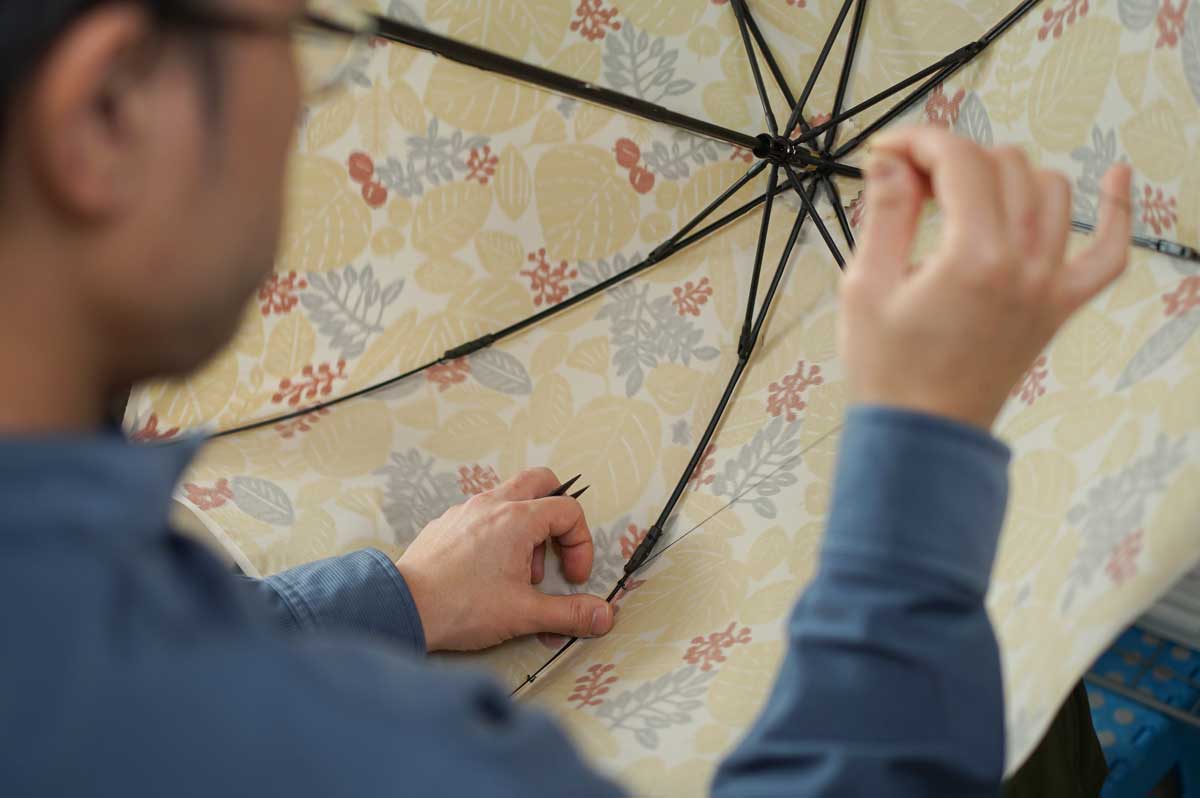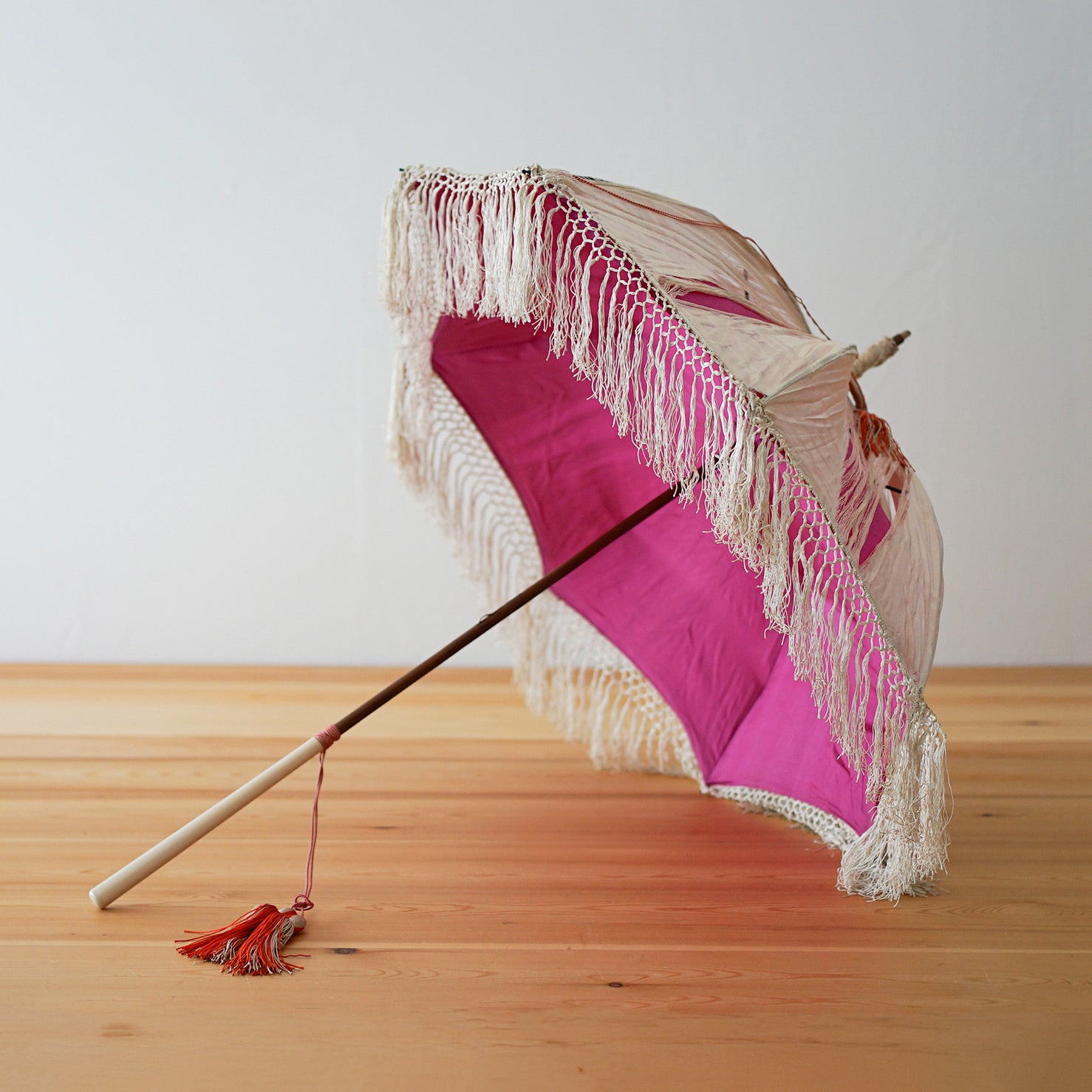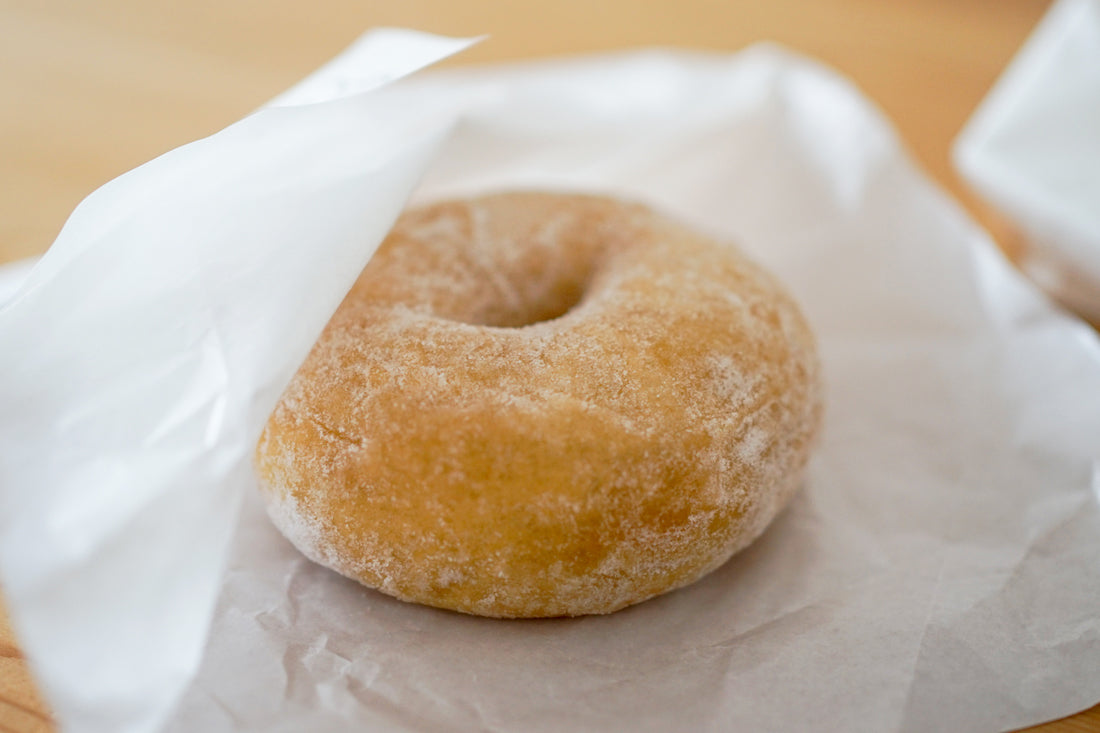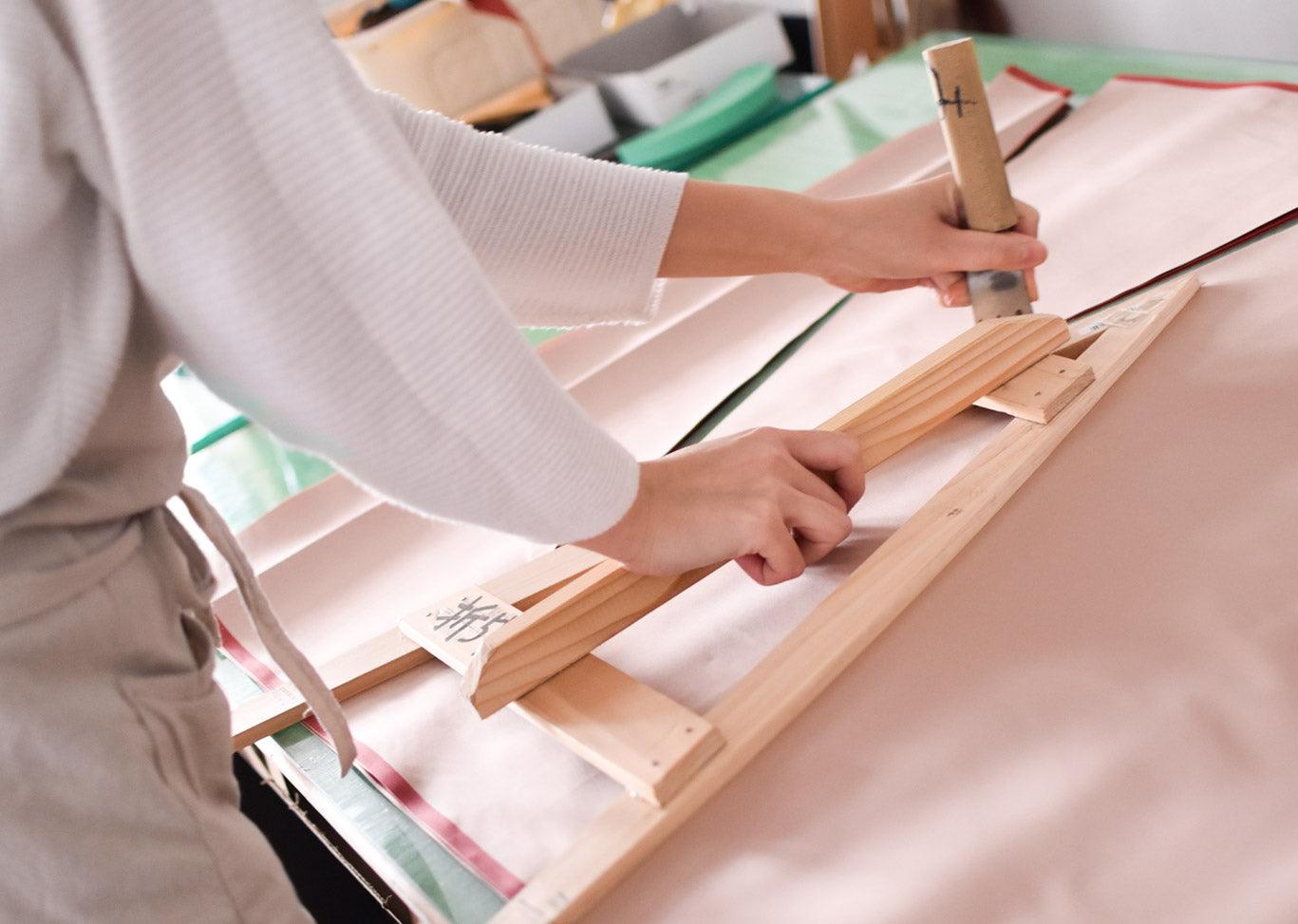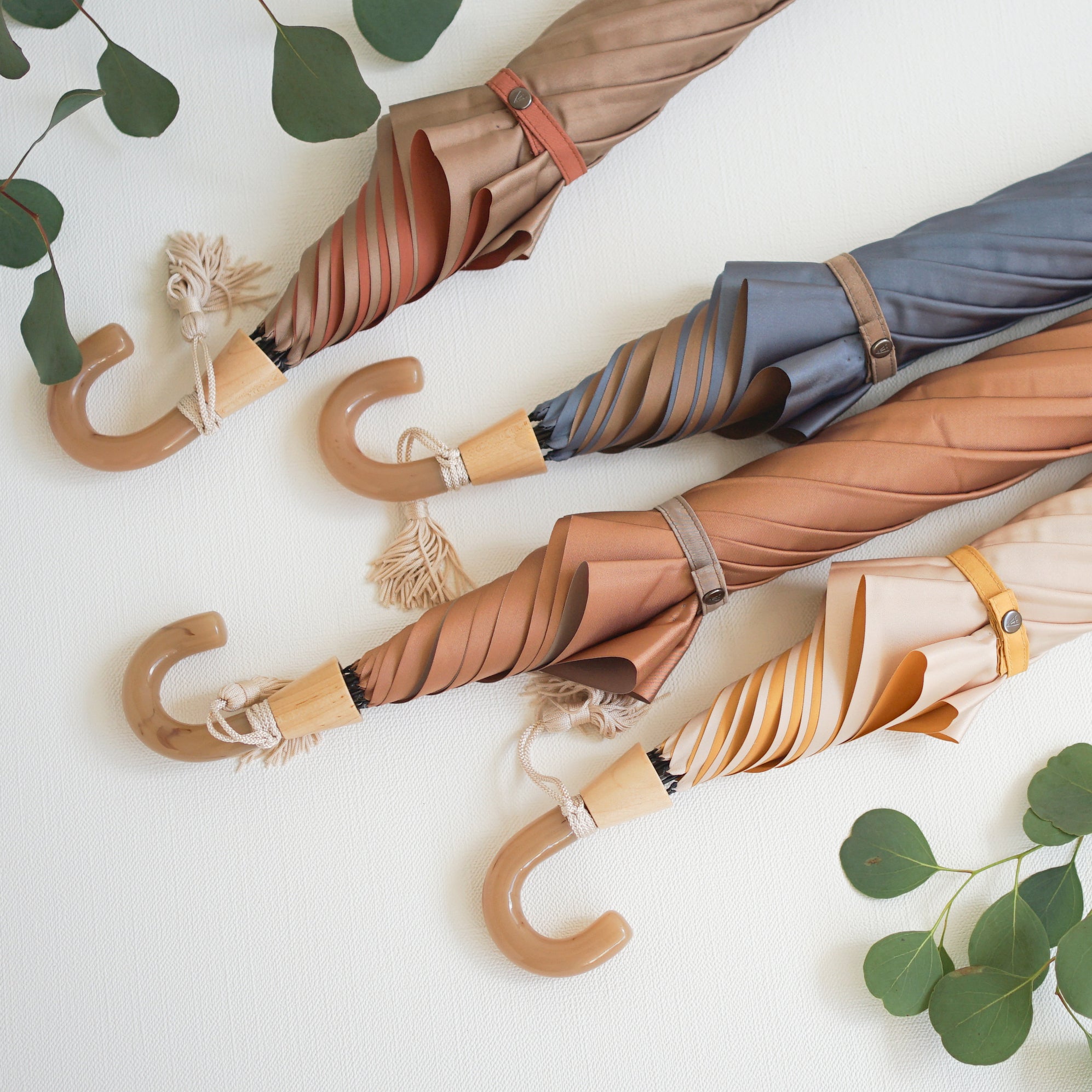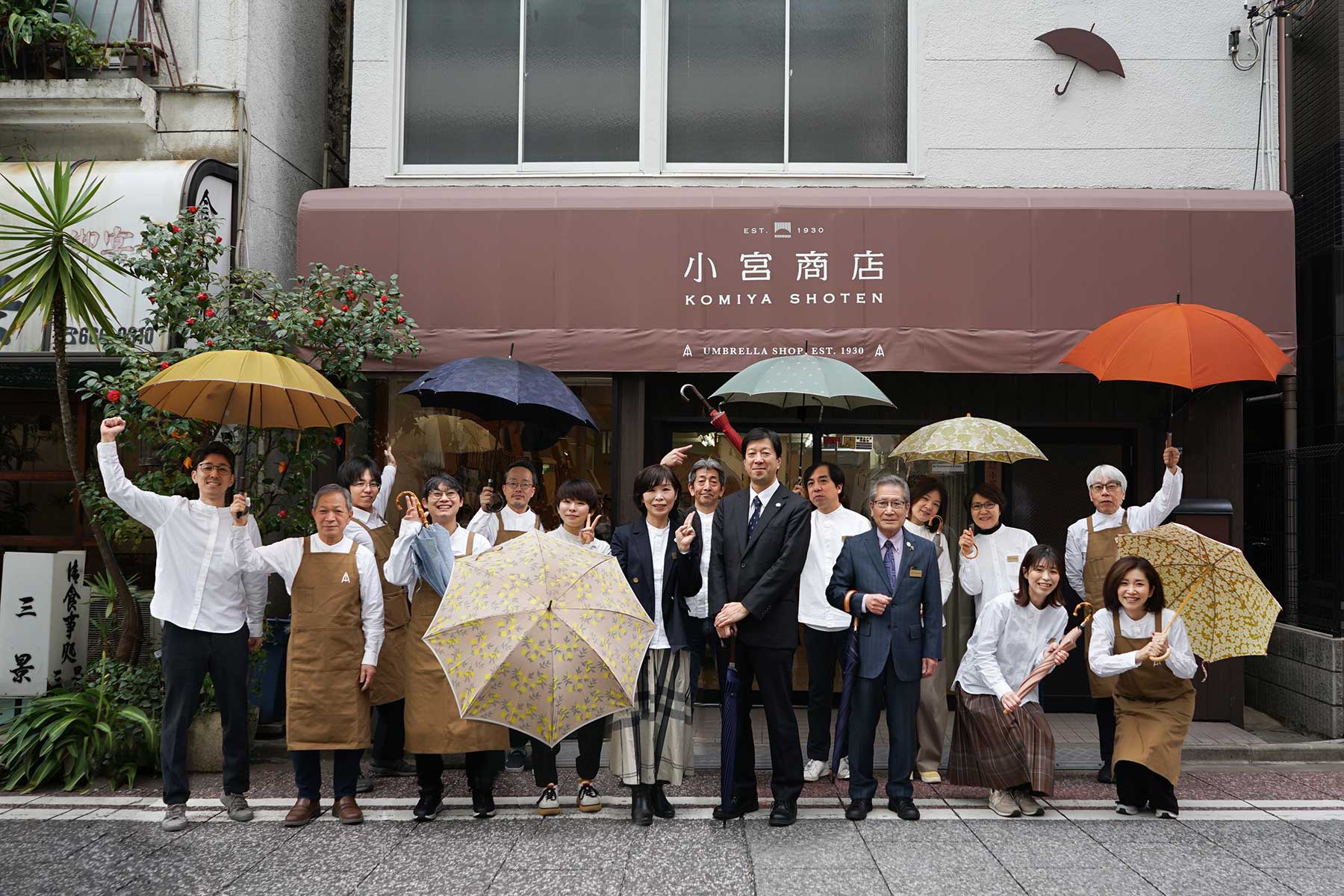More and more people are looking for parasols to cope with the harsh sunlight that brings with it the signs of summer.
Many customers visit the Komiya Shoten Higashi-Nihonbashi shop every day, and seeing them choosing the umbrellas they want makes me excited as a maker.
These lively shops and the surrounding area are often featured in "One Hundred Famous Views of Edo," a collection painted in the later years of Utagawa Hiroshige, a representative ukiyo-e artist of the Edo period.
And it is no exaggeration to say that "Shower on Ohashi Bridge and Atake," the most famous ukiyo-e print depicting rain, is set on the Sumida River, which flows through Chuo Ward.
Some of you may remember Van Gogh's Ukiyo-e prints. Hiroshige also painted rainy scenes set in Nihonbashi.
The associations of ukiyo-e, rain, umbrellas...it's hard not to evoke the atmosphere of the Edo period.

Hiroshige Utagawa's "Shower over the Great Bridge" and a copy of Van Gogh's
If you head west from the Higashi-Nihonbashi shop, you'll come to Kodenmacho, Nihonbashi, and Ginza, popular areas lined with long-established stores, but in fact, if you head east you'll reach Hamacho and the surrounding area, where there are also many famous stores and long-established stores.
This time we would like to introduce one such long-established restaurant, Hamatakatora.

It's also close to Hamacho Park. If you stop by during your walk, you're sure to have a great time.
Hamacho Takatora, located just a one-minute walk from Hamacho Station on the Toei Shinjuku Line, is a company founded in 1957 that manufactures and sells dyed and processed products.
Together with Komiya Shoten, we participate in the Chuo Ward Crafts and Manufacturing Association and are working to develop manufacturing rooted in Chuo Ward.
As soon as you step inside the store, you'll see a crammed space filled with tenugui (hand towels), bags, noren (curtain curtains), and hanten (traditional Japanese coats).
We were greeted by President Yufu Takahashi, the third generation president of Hamamatsu Takatora.
"The most popular item is the tenugui hand towels. Young people also choose them based on their favorite design and color, and it seems they enjoy creating their own favorite texture that you can't get with ready-made handkerchiefs."
Indeed, hand-dyed tenugui by artisans are filled with the exquisite softness and warmth that can only be achieved through handwork.


"We also produce a lot of bags. All of the designs are originals made by my father, the previous president. Of course, he also used traditional designs as a reference, and many of these designs contain a lot of puns and wordplay. The Edo chic, or the sensibility to enjoy everyday life, is still relevant today."
The dice pattern "always produces a bud" and the "no hardship (owl)" pattern - the puns and wordplay behind them have not changed since ancient times, but we are drawn to them in a variety of ways. When you think about it, it's easy to understand why just having one of these items makes you feel good. I feel like I've caught a glimpse of the generosity of tradition in these items that accompany casual but earnest thoughts such as good luck and good fortune.

There is also a list of wordplay available. You can purchase not only products, but also wishes and hopes that suit you.
All of the items, including tenugui hand towels in refreshing colors that are perfect for the upcoming season, and wallets with sophisticated designs and charming characters, have been dyed by skilled artisans.
However, recently, there has been an increase in the number of factories being forced to close due to factors such as the aging of their craftsmen.
"However, we cannot just sit back and watch the dyeing shop disappear. We send our own staff there and use their equipment, while also passing on our techniques. Rather than switching to something else just because the shop is going out of business, I think it is important to carry on the trust and passion that has been cultivated there and pass it on to the next generation. Of course, that is only natural if you are celebrating tradition and culture," Takahashi said, his smile looking very strong.
Although the world depicted by Hiroshige is no longer visible in the scenery overlooking the Sumida River, the thoughts that have been passed down through the generations are certainly still alive. Thank you to President Takahashi and everyone at Hamada Takatora for helping me realize this through their craftsmanship!
Why not visit the Hamacho area, which is filled with the chic and atmosphere of Edo, as well as human kindness?
Click here for more information about "Takatora Hama"
For more information about the Chuo Ward Craftsmen's Association, click here


